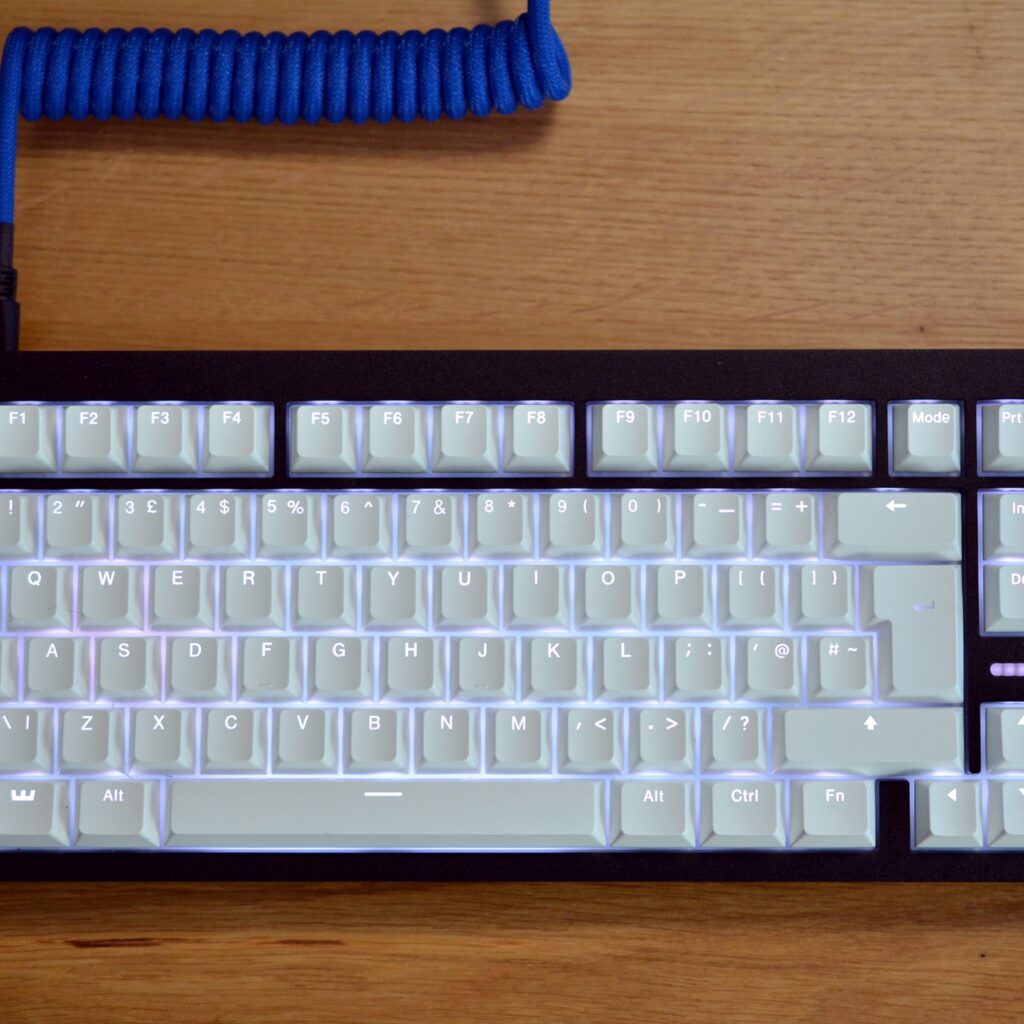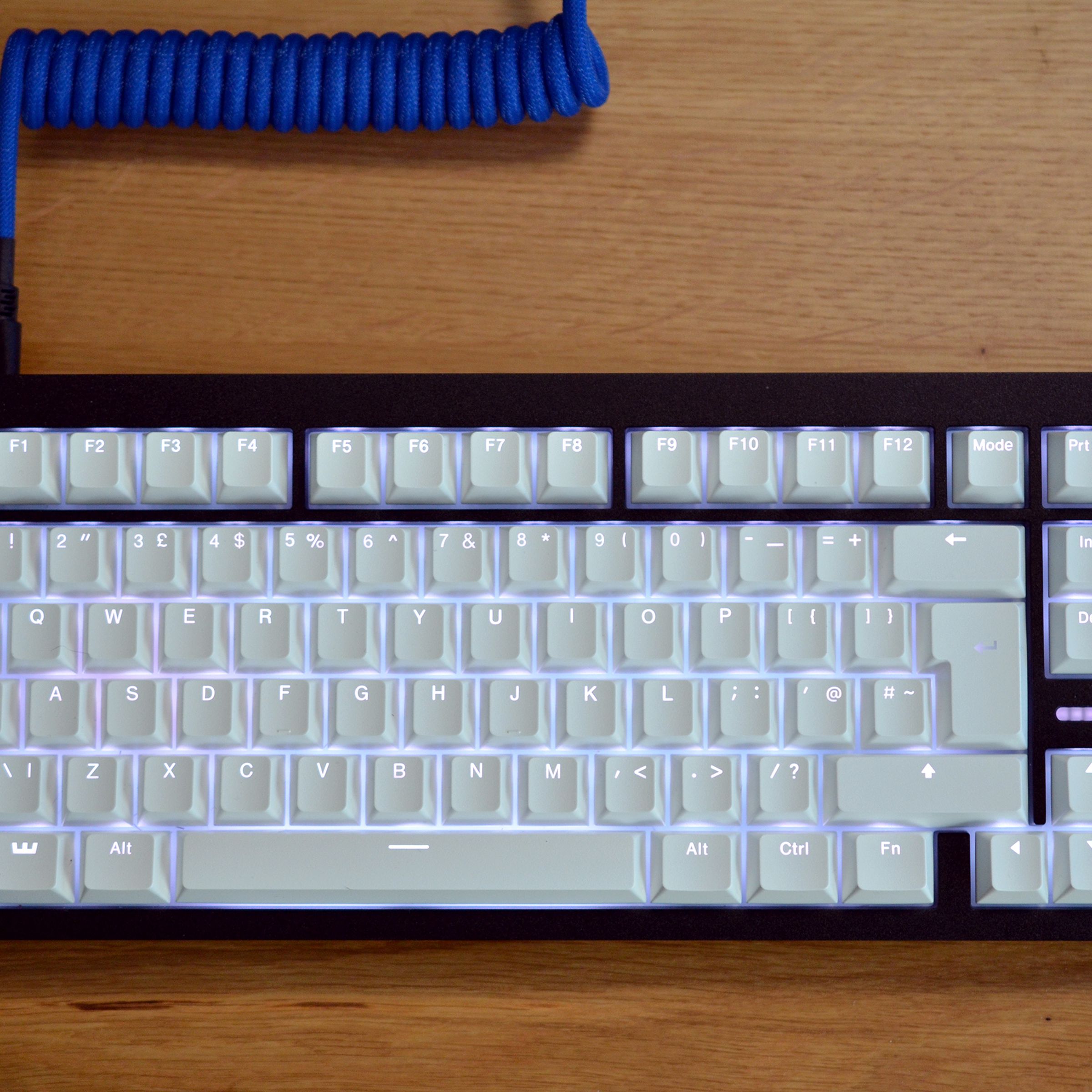Wooting created the best gaming keyboard on the market two years ago with the 60HE. It popularized the use of Hall effect switches and a Rapid Trigger system that speeds up how quickly you can activate a key, making it ideal for PC gaming. Now, Wooting has created the 80HE — an 80 percent keyboard that makes the best gaming keyboard even better.
While I’m a fan of 60 percent keyboards for gaming, I miss having a delete key, a print screen button, and even dedicated arrow keys and an F-row. The 80HE adds all of these keys inside a package that really doesn’t feel that much larger than the 60HE. It’s essentially two keys wider and an F-row of keys taller. The extra keys certainly make it more comfortable for regular typing and a lot more convenient than having to mod keys or use function key shortcuts.
Wooting has also switched up the housing for its 80HE, moving to a gasket mount instead of the tray mount on the 60HE. The silicone gasket mount holds together the board and the switch plate. It does a great job of reducing the noise, making the typing experience a little softer than on the 60HE. You can also adjust the case angle to 2.8 degrees, 6 degrees, or 10 degrees thanks to a variety of silicone feet included in the box.
I’ve been trying out both the $109.99 zinc alloy case and the $34.99 PCR ABS plastic case for the 80HE over the past week, and I personally prefer the zinc material. It’s the pricier option of the two, but you get a hefty case that helps produce the kind of thock sound I enjoy on keyboards.
I found the plastic case a little fiddly to open when I was building a bare-bones module version of the 80HE thanks to the clips holding it in place. The zinc option slid apart a lot more easily, though. You’ll have to be careful if you do take the 80HE apart or build one yourself, as there is a JST cable that needs to be disconnected when you remove the board from the case.
The sound on the 80HE is also improved over the 60HE thanks to updated Hall effect switches. Wooting’s Lekker V2 switches now wobble less and sound better than the original V1 switches. The differences are subtle, but I always disliked the key wobble on the 60HE default switches, so I’m happy to see that improved.
The Lekker switches are hot-swappable, so you can swap them out if they break or replace them with any Hall effect switches. Wooting lets you pick between the Lekker L45 and L60, with both feeling like linear switches and the L60s having a little more key start and end force. Wooting also uses screw-in stabilizers to eliminate rattle on the 80HE, and these are also replaceable with most other third-party screw-in and clip-in stabilizers.
The real magic of Wooting’s keyboards is made possible by these Hall effect switches, which use a magnet so the board can track how far a switch has been pressed. Most Cherry MX-style switches that are commonly used on mechanical keyboards use a copper mechanism to register a press with a board at a set actuation point of around 2mm. On the 80HE, you can adjust the actuation point on individual keys all the way down to 0.1mm.
The improved Wootility software allows you to enable adjustable actuation points, Rapid Trigger, and more advanced key functionality. Rapid Trigger changes the actuation and reset point of keys on the fly so that keys will activate the moment you press down and deactivate instantly when you release them. You can then repeat a key press in the middle of a motion, without needing to surpass the actuation point.
Rapid Trigger is ideal for PC gaming because of the fast deactivation that lets you move around quickly and repeat key presses faster. Keyboard manufacturers like SteelSeries, Keychron, and others have copied the Rapid Trigger feature after adopting Hall effect switches, and it has become a popular feature among Valorant, Counter-Strike 2, Overwatch 2, and Apex Legends players.
The other big addition to the 80HE is a new LED bar that sits above the arrow keys. Wooting says it’s designed to communicate with you and can tell you which profile you have active on the board or how much RAM or CPU your system is using. You can also just use it for fun RGB effects to match your keys or the rest of your setup. You can configure the LED bar in Wooting’s updated Wootility software.
One great feature of Wooting keyboards is that they store your profile on the board itself. You configure it in the Wootility web app, and there’s no need to install an app or have anything running in the background on your PC. Wooting is breaking from that tradition somewhat with the 80HE, though.
If you want RAM or CPU monitoring on the LED bar, you’ll need a new background app, which is coming soon. I haven’t been able to test this yet, but Wooting says it will only be required for the more advanced LED bar functionality. I’ve been using the LED bar as a profile indicator, which is super useful for swapping between gaming and typing profiles.
If you update the firmware on the 80HE, the LED bar fills up to show the progress, a neat little touch that hints at what will be possible with this new addition. Right now, you can get it to indicate the profile you’re using, when keys are pressed, or to let you know when the CAPS lock key is enabled. It will also be able to show your system volume once the background service is available.
The 80HE also supports up to 8kHz USB polling, but no wireless connectivity. While many keyboards promise 8kHz polling, the 80HE also scans every analog key position at that same rate. This faster polling rate also lowers the 80HE latency to just 0.125ms.
While I appreciate the improvements on the 80HE, the layout means the only options for cases right now are from Wooting directly. I’d expect to see third-party options over time, but until then, you’re stuck with black, ghost, and frost options for the plastic case or black, white, and raw options for the zinc case.
The 80HE — as a complete keyboard with a plastic case, switches, and keycaps — starts at $199.99. If you upgrade to the zinc alloy case, prices start at $289.99. You can also buy the standalone 80HE module without switches and keycaps for $154.99, but you’ll need a $34.99 plastic case or a $109.99 zinc alloy one.
Keychron, Corsair, SteelSeries, and many others offer similar boards with Hall effect switches, but none quite offer the combination of hardware and software that Wooting delivers. If you’ve always been tempted by the 60HE but wanted more keys, the 80HE delivers that and much more.



